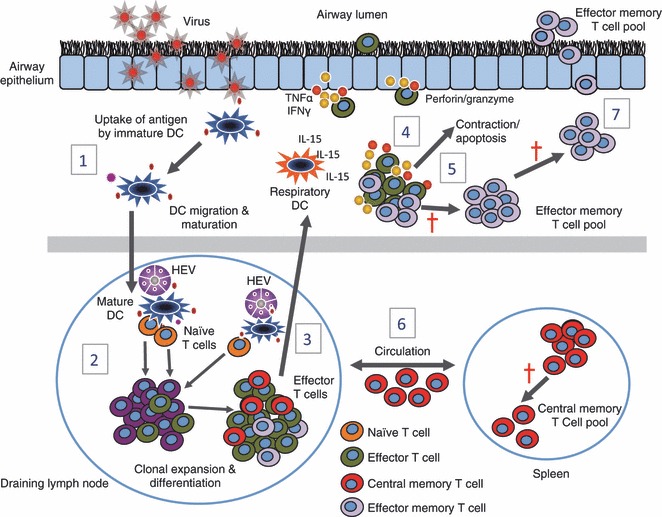Figure 1.

CD8+ T‐cell responses during primary respiratory virus infection. (1) Upon viral infection, lung‐resident immature dendritic cells (DC) take up viral antigen, differentiate, and migrate to the regional draining lymph nodes. (2) Antigen‐bearing DCs migrate to and localize in the vicinity of high‐endothelial venules (HEV) and interact with naive T cells that enter the lymph node (LN) via the circulation. Subsequently, viral‐specific T cells are selected through TCR/MHC I engagement and undergo rapid clonal expansion and differentiation. (3) Effector T cells migrate to the site of infection via the circulation, where they receive survival signals, in the form of IL‐15, from respiratory DCs (4) and through the release of anti‐viral cytokines and effector molecules kill virus‐infected epithelial cells. (5) After viral clearance the majority of virus‐specific effector CD8+ T cells die through apoptosis, while a hand full of surviving effector CD8+ T cells persist and seed a long‐lived memory pool (6) comprised of central memory T cells (CD62Lhi, CCR7hi), that reside in lymphoid tissue, and effector memory T cells (CD62Llo, CCR7lo) that reside at mucosal surfaces (7).
